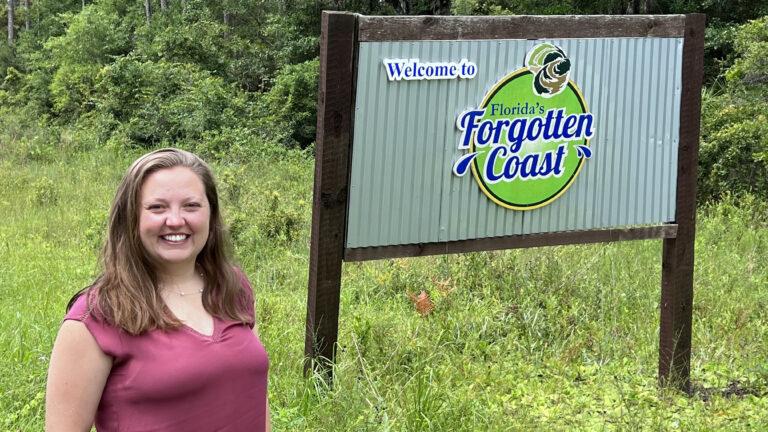The story of the souks
Bickel journeys to remote Morocco
In late November and December, while Morocco was becoming the first African and first Arab nation to reach the World Cup semi-finals, Richard Bickel was taking pictures.
Not of the soccer matches, or of the large crowds gathering to watch the games on big screen televisions outdoors.
Bickel, a well-seasoned photojournalist, his assignments worldwide now less hectic, his focus squarely on the operation of his Apalachicola photo gallery just yards away from the bay whose working people his decades-long work has portrayed, did not spend his time in the big cities of Casablanca, Fez and Tangier.
Instead, the 67-year-old was in the rural souks, the Arab marketplaces where farmers and shepherds and artisans gather to make themselves some Moroccan dirhams, each one equal to an American dime. The labyrinths found in these small rural towns, where “you can’t find yourself out unless you ask for directions,” all part of the setting Bickel chose to pursue his art, for three weeks beginning Nov. 15.
“Such work can be physically challenging,” he said in his Market Street gallery, standing in front of images from the Had-Raa and Essaouira souks strung on a line.
“Typically, shooting in places like Morocco, I’m in the field for 10- to 12-hour days, often walking miles in pursuit of an acceptable image. At times, I‘ll wait endlessly in one place, needing a passerby to complete a composition.”
The work was worth it, as evidenced by Bickel’s enthusiastic tone of voice as he places this particular trip within the canon of his work.
“I tend to search for and photograph what I call cultural remnants, timeless vignettes that exclude information as to when the photograph was made,” he said. “In Morocco, mass tourism has arrived, so to make such pictures one has to stray from the beaten-down paths, and ferret out traditional life and ways in the backstreets, and remote marketplaces and villages.”
Between the ferreting and the fixer, Bickel last month produced a series of rough-textured images of Berbers at the souks, that give off a visual pungency, of wool, sand and dirt. Each one black-and-white, any blood that might be in a photograph would not stand out, not like the facial expressions. The time of day is not apparent either, and when it is, it is not found in the sky, but in the shadows that fall on the ground.
“Moroccans do not like to be photographed,” he said. “As soon as the camera is lifted, typically one faces a torrent of scoldings and threats. So creativity not only is involved in composing an artful image, but also in reading a subject to counter their refusals.
“Shooting with an extreme wide-angle lens heightens the challenge – and often the tension. One has to be literally in the subject’s face to fill the frame,” Bickel said. “To be sure, the Moroccans are decent, welcoming souls. And people whom I love and respect. They simply do not want a camera in their face. And truth be told, I likely wouldn’t.”
After working with his late wife Susan in the travel industry, Bickel focused on photography full time, beginning his documentary career in Haiti, which he described as “a tough boot camp for street shooting, photographing hardened people existing a hard life.”
The Haitians helped Bickel sharpen an intuition in approaching people and gaining their trust. “And the energetic, elusive Haitians also provided a class in learning quickness,” he said. “Simply put, people don’t hold still as do landscapes. Often, one is offered but a single chance and moment to capture a fleeting picture; and when the opportunity is gone it is gone forever.
“Other places followed that were mentors in working with souls not always malleable to the lens – Yemen, Albania, Mali, Cuba – the list is long,” he said.
On assignment for a national travel magazine, Bickel arrived in Eastpoint in 1994. “It was dawn and the Eastpoint wharf seemed an epic scene from a widescreen film, chockablock with men and wooden boats as far as the eye could see,” he said. “The smell of the sea and fish guts hung heavy in the dank August air as outboard engines sputtered to life in great billows of smoke. A cacophony of shouts and laughter wafted through the smoke-veil; Eastpoint was awakening as it prepared to take a wage from the sea.
That morning became a turning point of Bickel’s life, as he confronted “a real maritime Florida in its profound beauty and rawness, with rugged souls hand-tonging oysters hours on end, day-upon-day to put bread on the table.
“‘There’s God in these waters,’ strapping oysterman James Polous revealed to me as I spent a day oystering on his boat,” Bickel recalled. “Shaking off his sweat-drenched cap, he surveyed the great blue bowl of Apalachicola Bay, cluttered with at least 150 oyster boats. “I built a home and raised a family on oysters. I got it all.
Six months later, the Bickels returned to Apalachicola Bay, found a fixer-upper home and the well-established professional photographer made a commitment to document the people and their lives of Apalachicola Bay.
“When I began shooting here in 1994, I hadn’t realized how quickly my images would become history — and above all, how a society could destroy one of the most prolific ecosystems on the planet Earth in but several decades,” he said.
“I’m not sure the world is in a good place in maintaining cultural identities. As with climate change and vanishing species, we see ethnicities and traditions endangered globally as a ‘McWorld’ culture erodes them,” Bickel said. “This is true here at home, in Franklin County, with the ongoing destruction of our fishing heritage, and it is so throughout our planet.”
As he reflects on last month’s Moroccan trip, it is unmistakably clear he continues to feel the pulse in his eyes and heart. “Street photography often involves finding fugitive elements and somehow fitting them together in the viewfinder to make, hopefully, a composition of strength,” Bickel said. “It also demands a passion to drive you forward, even when after a day in the field, you return to your hotel with nary a single worthwhile image.
“As most photographers will reveal, more great photographs are lost rather than made — but when that one exceptional picture is created it invigorates the appetite; it drives one over the next hill,” he said.
For more of Richard’s work visit www.richardbickelphotography.com, or his gallery at 81 Market Street.



Meet the Editor
David Adlerstein, The Apalachicola Times’ digital editor, started with the news outlet in January 2002 as a reporter.
Prior to then, David Adlerstein began as a newspaperman with a small Boston weekly, after graduating magna cum laude from Brandeis University in Waltham, Massachusetts. He later edited the weekly Bellville Times, and as business reporter for the daily Marion Star, both not far from his hometown of Columbus, Ohio.
In 1995, he moved to South Florida, and worked as a business reporter and editor of Medical Business newspaper. In Jan. 2002, he began with the Apalachicola Times, first as reporter and later as editor, and in Oct. 2020, also began editing the Port St. Joe Star.